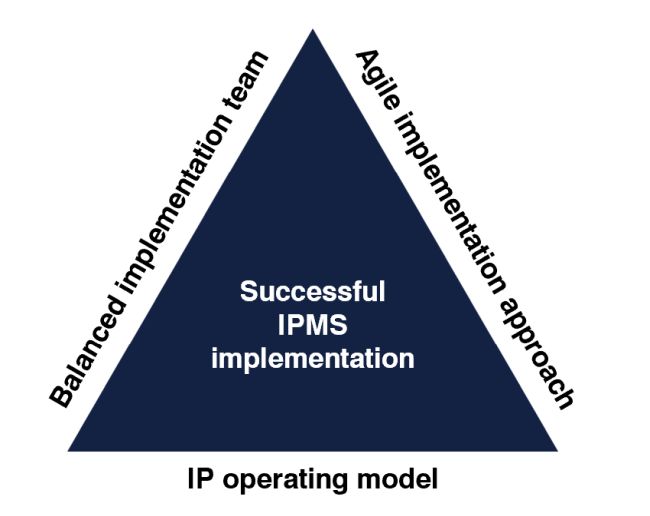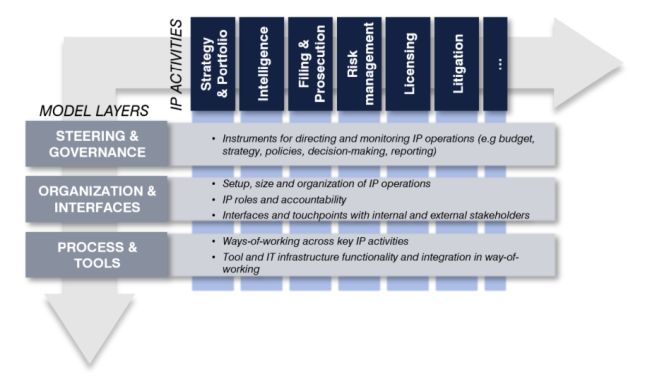- within Intellectual Property topic(s)
- within Technology topic(s)
Rethinking IPMS Implementation as Organizational Change
The intellectual property landscape is undergoing a profound transformation. As AI promises automation of routine IP tasks, the IP function is evolving toward higher-value strategic activities. An updated Intellectual Property Management System (IPMS) is essential for companies seeking to increase both efficiency and strategic effectiveness of IP operations.
However, many IP departments find that upgrading their IPMS is far less straightforward than expected. IPMS implementation projects are frequently plagued by extensive delays, significant cost overruns, and high team frustration levels. In our experience, many of these issues can be traced back to a fundamental error: the tendency to treat the IPMS implementation primarily as an IT project, instead of an organizational change management initiative.
The stakes are high: a poorly run IPMS implementation project will not only fail to deliver on promised benefits but can reduce organizational efficiency and even put valuable IP assets at risk. Conversely, when properly executed, an IPMS transformation can serve as a catalyst for evolving the IP function towards proactively driving business outcomes in close collaboration with business stakeholders.
In this article, we draw from our experience supporting multiple organizations through successful IPMS transformations, offering insights illustrated through real-world case studies. For each key principle, we present an actual implementation case that demonstrates both success factors and potential pitfalls. We will cover three essential elements that we've found distinguish successful IPMS implementations:
- Start by designing a future-proof IP operating model
- Setup a balanced implementation team to drive change
- Adopt an agile implementation approach
Figure 1
Field-tested keys to successful IPMS implementation

1. Start by Designing a Future-Proof IP Operating Model
Implementing an IPMS inherently influences the organization's way of working, necessitating thoughtful reflection on future operational approaches. If ignored, the system may lock the organization into a rigid structure that misaligns with evolving business needs and strategies, as it effectively hard-codes your IP operating model. Consequently, having a clear understanding of your desired IP operating model is indispensable for configuring the new IPMS to effectively support the intended way of working.
Figure 2
IP Operating Model Framework

Operating model design decisions have direct, practical implications for how the IPMS must be configured. For instance, consider a shift in patent portfolio decision-making: from traditional patent board approvals toward a delegated model where portfolio managers collaborate directly with business partners. The IPMS would need to support this by providing appropriate delegation capabilities, approval matrices, and visibility controls. If not, it will actively hinder your transition to a more strategy-driven approach.
In our experience, different IPMS providers offer varying degrees of implementation support, with a primary focus on technical configurations and system deployments. In other words, vendors will not be able to design the IP operating model for you. Rather, they will require you to be able to answer detailed questions for how different workflows are intended to function. If you want to get the most out of the new IPMS, doing this homework properly is critical.
Case study: Unlocking the True Potential of IPMS Through a Well-Defined Operating Model
A leading global player in the automotive industry embarked on a transformative strategic shift. With an IP organization consisting of 30 employees managing around 9,000 active patent rights, the company undertook a substantial redesign of their IP operating model to support a newly articulated, business-driven IP strategy.
This redesign aimed to enhance the alignment of IP with business priorities and involved key changes such as:
- Introduction of portfolio managers to integrate IP management across various business areas
- Major change in their collaboration model with outside counsel
- New involvement protocols for business stakeholders in IP decisions
However, their existing IPMS – a combination of a traditional docketing system with a home-built module for portfolio management – was outdated and incompatible with the new operating model. Specifically, it could not support efficient collaboration with external agents, lacked integration with business systems, and offered no capabilities for involving key business stakeholders in workflows – creating a significant barrier to implementing the new IP operating model.
Thanks to their meticulous groundwork in defining the IP operating model, including a clear vision of current and future ways of working, the company was well-positioned to use the IPMS upgrade as an accelerator for broader organizational transformation. This clarity allowed them to confidently select the right IPMS provider, armed with a well-defined vision of what they needed. Furthermore, it facilitated a focus on execution, minimizing the need for constant design adjustments during the configuration phase.
In just over a year, the company successfully executed extensive organizational changes, leveraging the IPMS transformation as a tool to consolidate new ways of working, all while ensuring a balanced workload for the project team. By distinguishing initial design elements from the IPMS implementation phase, they were able to focus on smooth execution and circumvent decision-making uncertainties, thereby fully maximizing the benefits of the IPMS transformation.
2. Empower the Implementation Team to Drive Change
When implementing a new IPMS, the composition and structure of the project team are key determinants of the implementation's success. Team composition profoundly influences not just the efficiency, duration, and cost of the process, but also the overall acceptance and integration of the system within the organization.
A common mistake is underestimating the demands an IPMS implementation places on the internal organization, and consequently setting up an internal project team that either a) lacks mandate for decision-making, b) lacks needed capabilities, and/or c) lacks sufficient resources.
While having the right roles is essential, equally important is ensuring appropriate seniority and authority within the team structure. The most comprehensive team composition will still struggle if key internal roles lack sufficient decision-making authority or executive sponsorship. The IP Operating Model Expert leading the initiative must have both deep domain knowledge and the organizational standing to drive meaningful change. Similarly, Process Owners should have sufficient experience to understand how their area fits into the broader IP ecosystem.
Successful implementations typically feature a governance structure where senior leadership maintains visibility and provides active support, while day-to-day execution is handled by subject matter experts with appropriate domain knowledge. This dual approach ensures the project maintains strategic alignment while benefiting from detailed operational expertise.
Fact box: Roles in an IPMS Implementation Project
The vendor team typically includes three main roles:
- Vendor Project Manager: Coordinates resources, manages implementation timeline, and serves as primary contact for issue resolution.
- Configuration Consultant: Provides guidance on system capabilities and translates requirements into specific settings.
- Data Migration Consultant: Designs migration strategy, working with internal support to ensure data integrity.
To complement this, a successful internal IPMS implementation team requires a balanced mix of roles which typically should include:
- IP Operating Model Expert(s) as Project Lead: Possesses expertise to align IPMS requirements with organizational goals and drive change.
- Process Owners: Subject matter experts for specific IP activities who provide input on current processes and desired future state.
- Data Mapping Support: Typically paralegals with knowledge of existing data structures who ensure accurate migration from legacy systems.
- IT Integration Support: Internal IT representative who can ensure proper integration with existing IT infrastructure and address security requirements.
- Reference Team: Representatives from internal stakeholders (e.g R&D, Legal, Business areas) who can offer complementary perspectives.
Case study: Lessons from a Multinational Corporation's Project Team Missteps
A global company with an IP organization of approximately 100 employees urgently needed to upgrade its IPMS. The company had faced challenges with data quality, which had led to accidentally abandoning business-critical patents. The need for change was evident and a shared consensus within the entire IP organization. Still, the project quickly faced challenges, which manifested as revisiting requirements and topics late in the implementation phase, prolonging the timeline.
The company had not only skipped the critical step of clarifying their IP operating model but had also underestimated the importance of ensuring a balanced project team – a combination that resulted in delays and extended timelines.
The project lead was positioned far down in the organizational hierarchy without explicit executive endorsement to drive impactful change. This positioning, paired with a project team that was too broadly composed, resulted in unclear role responsibilities and ownership, significantly hindering effective decision-making.
Furthermore, the team composition featured an imbalance, with IP administrators and paralegals overrepresented, and selection criteria that prioritized roles not necessarily fit to constructively drive change. While IP administrators and paralegals are important users of the tool, their focus is typically on the operational aspects of IP management rather than strategic business priorities. Their limited perspective may not encompass the overarching business objectives and strategic vision necessary for successfully implementing significant system upgrades.
The lack of a balanced project team resulted in ongoing challenges for the organization, causing ineffective decision-making, which ultimately extended project timelines and increased costs.
3. Adopt a Modular Implementation Approach
The comprehensive scope of an IP operating model creates an implementation challenge: attempting to perfectly configure every detail at the outset often leads to project paralysis. Organizations pursuing comprehensive perfection before go-live frequently become stuck in endless design cycles.
A more effective approach is to embrace agile implementation methodology, prioritizing critical aspects for initial deployment while establishing a roadmap for iterative enhancements. This approach recognizes that some elements are more essential for immediate operations, and user feedback will inevitably inform refinements.
The agile approach offers several advantages for IPMS implementations. First, it accelerates time-to-value by deploying core functionality sooner. Second, it reduces risk by creating multiple opportunities for course correction based on actual user experience. Finally, it increases user acceptance by involving stakeholders throughout the process rather than presenting them with a complete but potentially overwhelming system.
The ability to implement effectively in prioritized stages hinges on having a clear IP operating model, which guides decision-making on what elements are truly essential for initial deployment. Without this clarity, organizations risk either implementing too much at once (leading to overwhelmed users) or focusing on the wrong priorities (undermining critical business operations).
Case study: Navigating Urgency with an Agile Approach
A leading European security technology company faced an urgent need to upgrade its IPMS due to multiple critical factors:
- Security vulnerabilities posed significant risks
- There was a threat of data loss from an outdated system
- The imminent retirement of the key individual who understood the system's intricacies heightened the urgency
A swift transition was vital to mitigate these risks and ensure continued operation without disruption.
The team adopted an agile approach, focusing on implementing essential functionalities to address immediate operational and security needs. This was possible thanks to their clear IP operating model, which enabled them to prioritize core processes and implement them according to clear principles. By establishing essential capabilities according to core principles behind their operating model, they ensured the foundation of the new IPMS was robust enough to maintain daily operations while allowing for further refinement.
During the first roll-out, efforts concentrated on integrating key processes, with the understanding that less critical workflows could be addressed later. Efforts spent on critical IP operating model aspects such as agent interaction or decision-making modules were prioritized. This methodology facilitated rapid deployment while ensuring the system could continue to evolve in response to user feedback and in line with the desired IP operating model.
The chosen approach resulted in a fast go-live within four to five months, essential for swiftly addressing security and operational risks. User feedback facilitated informed decision-making on later configurations, allowing the system to adapt effectively based on real feedback, tailoring it to meet practical needs and fostering a collaborative work environment.
Summary
As IP departments face increasing pressure to deliver strategic value while managing growing portfolios with constrained resources, the promise of modern IPMS platforms is compelling. Yet the most successful organizations recognize that implementing a new IPMS is not merely an opportunity to upgrade technology—it's a catalyst for evolving the entire IP function into a more strategic, business-aligned organization.
To unlock true strategic value from your IPMS implementation, focus on these three critical factors:
- Start by designing a future-proof IP operating model: Begin by articulating how your IP function should operate to deliver maximum value. When evaluating IPMS options, prioritize systems that can support your desired operating model. Without this clarity, even the most sophisticated IPMS will merely automate existing inefficiencies.
- Empower the implementation team to drive change: Successful implementations require a balanced team with sufficient authority to drive meaningful change. Ensure your implementation lead has both domain knowledge and organizational standing to remove obstacles.
- Adopt a modular implementation approach: Identify the highest-value elements to implement first, ensuring core operations are maintained while deferring less essential capabilities. Establish a structured roadmap for subsequent iterations based on user feedback and evolving business needs.
As AI and other technologies continue to reshape the IP landscape, those organizations that build implementations on the solid foundation of a clear operating model, the right team, and an agile approach will be best positioned to protect and maximize the value of their intellectual assets.
The content of this article is intended to provide a general guide to the subject matter. Specialist advice should be sought about your specific circumstances.





